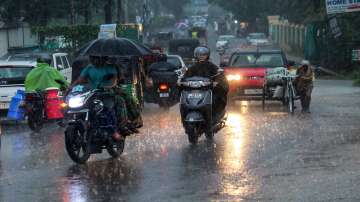Uttarakhand: A Red and Orange alert has been issued by the Meteorological Department from 11 to 14 August 2023 in several districts of Uttarakhand.
Districts including Rishikesh, Neelkanth, and others have received significant rainfall in the past 24 hours, the IMD said.
The impact of ENSO on monsoon rain over north India has become "exceptionally strong" in recent decades while it has weakened for the central region, where agriculture and livelihoods are heavily dependent on seasonal precipitation, a new study says.
ENSO, or El Nino-Southern Oscillation, is a climate pattern in the tropical Pacific Ocean that can swing between two main phases -- El Nino and La Nina.
El Nino, the warming of waters in the Pacific Ocean near South America, is generally associated with weakening monsoon winds and dry weather in India. La Nina, the opposite of El Nino, typically brings good rainfall during the monsoon season.
Led by Roxy Mathew Koll, a climate scientist at the Indian Institute of Tropical Meteorology in Pune, the study found that the relationship between ENSO and the monsoon has evolved over time.
While the connection grew stronger from 1901 to 1940 and remained stable from 1941 to 1980, it has weakened since 1981. These changes in the ENSO-monsoon interaction, however, are not consistent across the country.
The influence of ENSO over north India has surged in recent decades while the connection has waned for central India, historically known as the "core monsoon zone", Koll said.
Over south India, there is no considerable variation in the ENSO-monsoon relationship.
This means La Nina and El Nino now impact rainfall over north India the most and central India the least.
The monsoon trough -- a band of low-pressure areas -- and depression-related variability has emerged as the primary cause of rainfall variability over central India, surpassing the dominance of El Nino and La Nina, the study says.
The role of the monsoon trough and depressions in north India's rainfall is declining.
This could be due to the weakening monsoon strength because of the Indian Ocean warming, along with a reduced penetration of monsoon depressions into the northern Indian region in recent years, it says.
Historically, at least half of the El Nino years caused droughts during monsoon, with the all-India rainfall being lower than 90 per cent of the long-period average.
ALSO READ | Delhi likely to receive light rainfall for coming two days | Know weather updates
Latest India News

